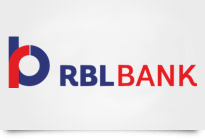The Payment Card Industry Data Security Standard (PCI DSS) is a set of security requirements intended to ensure that all companies processing, storing, or transmitting credit card information maintain a secure environment. It’s not just a regulatory framework; it’s a commitment to protecting sensitive customer information.
One of the key requirements of PCI DSS is to perform regular Secure Code Reviews of all custom code that touches cardholder data. This helps to identify and fix security vulnerabilities in the code before it is put into production.
What is a Secure Code Review?
A Secure Code Review is a process of inspecting and evaluating computer software code to find errors, security vulnerabilities, and other defects. It is a critical part of the software development lifecycle (SDLC) and can help to improve the quality and security of software.
Why is Secure Code Review important for PCI DSS compliance?
PCI DSS requires organizations to take steps to protect cardholder data from unauthorized access, use, disclosure, modification, or destruction. Code reviews can help to identify and fix security vulnerabilities in the code that could be exploited by attackers to gain access to cardholder data.
Key to Performing Secure Code Review for PCI DSS compliance
There are a few key things to keep in mind when performing a Secure Code Review for PCI DSS compliance:
- The Secure Code Review should be conducted by someone who is familiar with the PCI DSS requirements and secure coding practices.
- The Secure Code Review should be thorough and should cover all aspects of the code, including the input validation, output handling, and error handling.
- Any security vulnerabilities that are found should be fixed before the code is put into production.
Automated Secure Code Review tools
There are a number of automated Secure Code Review tools available that can help to identify security vulnerabilities in code. However, it is important to note that automated tools cannot find all security vulnerabilities. Therefore, it is important to also have manual Secure Code Reviews conducted by experienced security professionals.
Code review is an essential part of PCI DSS compliance. By performing regular Secure Code Reviews, organizations can help to identify and fix security vulnerabilities in their code before they are exploited by attackers.











